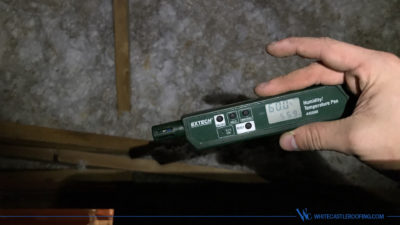It may not have felt like it this week, but January is in full swing. Winter in Nebraska usually means three things:
- It’s cold.
- It’s dry.
- You have a countdown until the Spring Football game.
As of today we’ve got 96 days to go. And that means the possibility of 96 days of cold, dry weather. To combat that, most people’s first reaction is to do two things in their house:
- Turn on the heater.
- Turn up the humidifier.
BUT before you do that, consider this: what grows well in warm, moist environments? Mold.

The EPA recommends keeping indoor humidity levels low — definitely below 60%, but ideally more in the 30-50% range. When it gets above that, the home becomes susceptible to mold, particularly in attics with inadequate ventilation (both air intake, through soffits, and expulsion, through roof vents). Never mind that it can look like a roof leak (and damage your ceiling or drywall accordingly) — moldy insulation is a big concern for your family’s health!
HVAC specialists will take it a step further, with a recommended indoor humidity at 15-35% during the winter months (when outdoor temperatures often range from -10˚F to 20˚F). Having an indoor humidity outside this range can lead to a host of problems — mold, bacterial and viral growth (leading to more illnesses), increases in symptoms for asthma and allergy sufferers, and excess energy utilization (and strain on your appliances).
The simple, obvious solution here: turn down your humidifier in your house. That single, easy step can save you a whole bunch of headaches (literally and figuratively), and if you do see some water spots that look like roof leaks, more often than not this is what fixes them. Don’t worry, it won’t be forever — after all, Spring Kickoff is under 100 days away!